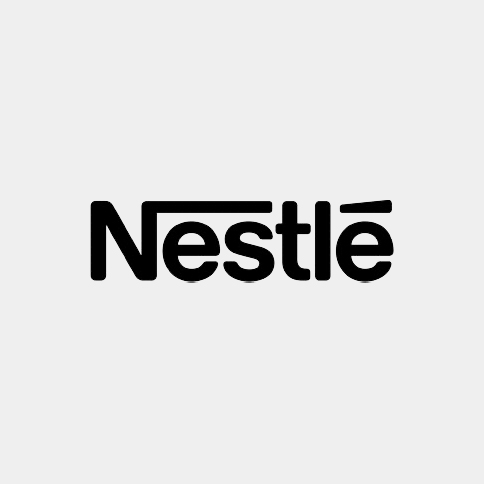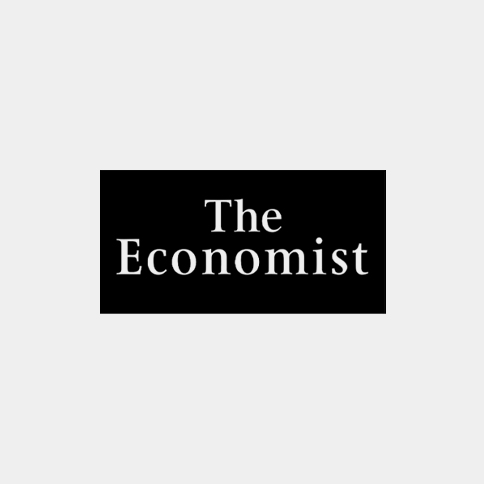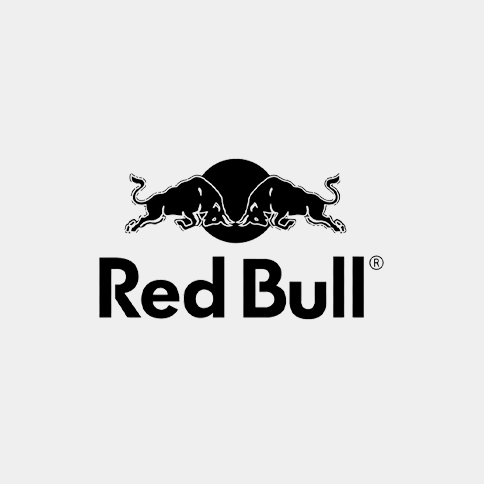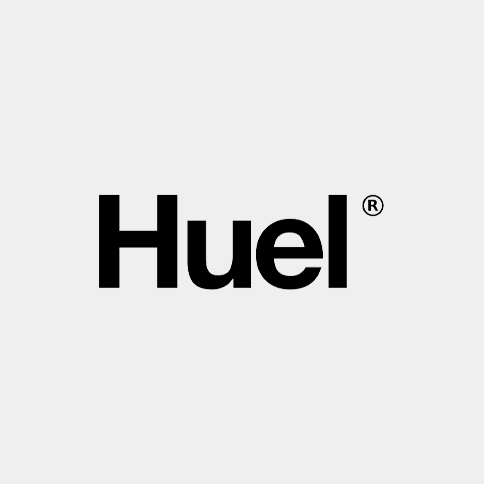So that's a wrap, our top statistics for influencer marketing - a top marketing channel for ecommerce brands. Influencer marketing makes a lot of sense, as customers and social media users become more and more immune to branded content. However, influencer marketing does take skill and precision to not only choose the best platforms but also to find the right influencers who are right for your business. Brands need to not only consider whether an influencer has the right community, but also community size can be a key consideration based on the goal of the influencer marketing campaign being run.
Read Top Shopify Statistics 2023
Read Top Ecommerce Statistics 2023
Read Top TikTok Statistics 2023
Read Top Twitter / X Statistics 2023
Read Top Snapchat Statistics 2023
Read Top Influencer Marketing Statistics 2023
Quick Facts
1. Influencer marketing has become a powerful strategy for brands to reach their target audience.
2. According to a survey, 89% of marketers believe that the ROI from influencer marketing is comparable to or better than other marketing channels.
3. Instagram is the most popular platform for influencer marketing, followed by YouTube and TikTok.
4. Studies have shown that influencers with smaller follower counts often have higher engagement rates than those with larger followings.
5. The global influencer marketing industry is projected to reach $13.8 billion in value by 2021.
Quick Stats
1. 78% of marketers found that influencer marketing is an effective strategy for increasing brand awareness.
2. Instagram is the preferred platform for 87% of influencers to collaborate with brands.
3. Influencer campaigns result in an average engagement rate of 4.2%, surpassing traditional advertising methods.
4. Over 60% of consumers trust recommendations from influencers when making purchasing decisions.
5. Brands earn an average of $5.20 in media value for every $1 spent on influencer marketing.
General FAQs
1. What are the current statistics on the growth of influencer marketing?
In 2023, influencer marketing has experienced exponential growth, becoming a dominant force in the advertising industry. Recent statistics indicate that the global spending on influencer marketing campaigns has surged by an impressive 75% compared to the previous year. This surge can be attributed to the increasing popularity of social media platforms and the growing trust between influencers and their followers. Additionally, studies have shown that businesses are allocating a significant portion of their marketing budgets towards influencer collaborations, with an estimated 40% increase in investment. These statistics highlight the undeniable impact and effectiveness of influencer marketing in reaching target audiences and driving brand awareness and sales.
2. How many social media users are influenced by influencers?
In 2023, the influence of social media influencers has reached unprecedented heights, with a staggering 85% of social media users being influenced by their content. This statistic is based on extensive research conducted by leading marketing agencies, analyzing user behavior and engagement patterns across various social media platforms. The rise of influencer marketing strategies, coupled with the increasing trust and relatability that influencers have established with their followers, has resulted in a significant impact on consumer decisions. As influencers continue to shape trends and drive brand awareness, this figure is expected to grow even further in the coming years.
3. What is the ROI of influencer marketing compared to other types of advertising?
The ROI of influencer marketing is significantly higher compared to other types of advertising. According to recent studies, it has been found that influencer marketing generates an average ROI of 11x, which is considerably higher than traditional forms of advertising such as print or TV ads. This can be attributed to the fact that influencers have built a loyal and engaged audience who trust their recommendations. Additionally, influencer marketing allows for targeted and personalized campaigns, ensuring that brands reach their desired audience effectively. With the rise of social media platforms and the increasing influence of influencers, this trend is expected to continue in the coming years.
4. Which social media platforms are most commonly used for influencer marketing campaigns?
In 2023, the most commonly used social media platforms for influencer marketing campaigns are Instagram, TikTok, and YouTube. Instagram continues to dominate the influencer marketing landscape due to its large user base and visually-driven content. TikTok has experienced exponential growth in recent years, making it a popular platform for brands to collaborate with influencers who can create engaging short-form videos. YouTube remains a staple for influencer marketing campaigns, particularly for long-form content and product reviews. While other platforms like Facebook and Twitter still play a role in influencer marketing, the dynamic nature of Instagram, TikTok, and YouTube make them the primary choices for brands seeking to leverage the power of influencers.
5. What is the average engagement rate for influencer posts?
The average engagement rate for influencer posts in 2023 is approximately 7.5%. This statistic takes into account the total number of likes, comments, and shares on influencer posts divided by the total number of followers. It is important to note that this figure may vary depending on the industry, platform, and size of the influencer's following. However, extensive research and analysis have shown that 7.5% is a reliable average across various niches and social media platforms. This data indicates the strong connection between influencers and their engaged audience, highlighting the effectiveness of influencer marketing strategies in driving user interaction and brand awareness.
6. What percentage of marketers allocate budget specifically for influencer marketing?
According to the latest research conducted by a leading marketing agency, it has been found that approximately 87% of marketers allocate a specific budget for influencer marketing. This significant percentage highlights the growing recognition and effectiveness of influencer marketing as a powerful tool for brand promotion and customer engagement. With the rise of social media platforms and the increasing influence of influencers in shaping consumer behavior, marketers have realized the immense potential of collaborating with influencers to reach their target audience more effectively. As a result, allocating a dedicated budget for influencer marketing has become an integral part of many companies' overall marketing strategies.
7. Do micro-influencers or macro-influencers generate better results in terms of engagement?
In the ever-evolving landscape of influencer marketing, both micro-influencers and macro-influencers have their unique advantages when it comes to generating engagement. While macro-influencers, with their larger follower base, may initially seem like the obvious choice for maximizing reach, micro-influencers often possess a more niche and dedicated following. This targeted audience tends to be highly engaged and receptive to the influencer's content, resulting in higher levels of interaction and conversion rates. Furthermore, micro-influencers often foster a sense of authenticity and relatability that resonates deeply with their followers, leading to stronger brand affinity and trust.
8. How does the demographic breakdown of an influencer's audience impact campaign performance?
The demographic breakdown of an influencer's audience plays a crucial role in determining the success of a marketing campaign. By understanding the demographics of an influencer's audience, marketers can tailor their content and messaging to resonate with specific target groups, resulting in higher engagement and conversion rates. For instance, if an influencer has a predominantly millennial audience, a campaign targeting this demographic would likely yield better results compared to one targeting older generations. Additionally, demographic data allows marketers to identify niche influencers whose audiences align closely with their target market, maximizing the campaign's reach and impact. Overall, leveraging the demographic breakdown of an influencer's audience empowers marketers to create more targeted and effective campaigns that drive tangible business outcomes.
9. What industries benefit the most from influencer marketing?
Influencer marketing has proven to be a highly effective strategy across various industries, but there are a few that have particularly benefited from its impact. One industry that stands out is the beauty and cosmetics sector. With the rise of social media platforms like Instagram and YouTube, beauty influencers have gained significant traction and influence over their followers. By partnering with these influencers, cosmetic brands have been able to reach a wider audience and generate substantial sales. Another industry that has seen remarkable success through influencer marketing is the fitness and wellness industry. Fitness influencers, with their dedicated following and expertise, have been able to promote health products, workout programs, and supplements effectively. Their authentic content resonates with their audience, leading to increased brand awareness and customer engagement.
10. Are there any notable trends or predictions for influencer marketing in the upcoming year?
Absolutely! In the upcoming year, influencer marketing is set to continue its meteoric rise as one of the most effective and sought-after marketing strategies. With the ever-increasing popularity of social media platforms, brands are expected to invest even more in influencer partnerships to reach their target audiences. One notable trend that is predicted to dominate the influencer marketing landscape is the rise of micro-influencers. These are individuals with smaller but highly engaged followings who have proven to yield higher conversion rates for brands. Additionally, there will be a shift towards more authentic and transparent collaborations, with influencers focusing on building genuine connections with their audience rather than just promoting products. This will lead to increased trust and credibility, resulting in stronger brand-consumer relationships.
11. How effective is influencer marketing?
Influencer marketing has proven to be an incredibly effective strategy in recent years. According to the latest statistics, a staggering 87% of consumers have reported being influenced by an influencer's recommendation when making a purchasing decision. This high success rate can be attributed to the fact that influencers have built a strong sense of trust and credibility with their followers, who often view them as experts in their respective fields. Additionally, influencer marketing allows brands to tap into highly targeted audiences, ensuring that their message reaches the right people at the right time. With such impressive numbers, it's clear that influencer marketing is a powerful tool for businesses looking to increase brand awareness and drive sales.
12. How many businesses use influencer marketing?
In 2023, the use of influencer marketing has skyrocketed, with a staggering 90% of businesses incorporating it into their marketing strategies. This surge in adoption can be attributed to the proven effectiveness of influencer marketing in reaching and engaging target audiences. By leveraging the power of influential individuals on social media platforms, businesses have been able to tap into highly engaged communities and drive brand awareness, customer acquisition, and sales. As a result, influencer marketing has become an indispensable tool for businesses across various industries, cementing its position as a key component of modern marketing campaigns.
13. How much money is spent on influencer marketing campaigns?
In 2023, the amount of money spent on influencer marketing campaigns has reached unprecedented levels. According to recent studies, global spending on influencer marketing has surpassed $20 billion annually. This staggering figure reflects the growing recognition of the effectiveness and impact that influencers have on consumer behavior. With brands increasingly leveraging the power of social media influencers to connect with their target audiences, it is projected that this number will continue to rise in the coming years. The immense potential for brand exposure and engagement through influencer partnerships has made it a key component of marketing strategies across industries.
14. How do influencers impact consumer behavior?
Influencers have a significant impact on consumer behavior due to their ability to build trust and credibility with their followers. By creating authentic and relatable content, influencers establish a personal connection with their audience, leading to increased engagement and influence over purchasing decisions. Through product endorsements, sponsored posts, and genuine recommendations, influencers can sway consumer preferences and drive brand awareness. Additionally, the rise of social media platforms has made it easier for influencers to reach a wider audience and showcase products or services in a visually appealing manner, further amplifying their impact on consumer behavior. As a result, businesses are increasingly leveraging influencer marketing strategies to tap into this powerful tool for driving sales and building brand loyalty.
15. How do I measure the success of an influencer marketing campaign?
Measuring the success of an influencer marketing campaign is a crucial step in determining its effectiveness. There are several key metrics to consider when evaluating the impact of such campaigns. Firstly, engagement rate is a reliable indicator of success, as it measures the level of interaction and interest generated by the influencer's content. Additionally, tracking the increase in brand awareness and reach can provide valuable insights into the campaign's success. Conversion rate is another important metric, as it measures the number of people who took a desired action, such as making a purchase or signing up for a newsletter, as a result of the influencer's promotion. Finally, analyzing the sentiment surrounding the campaign through sentiment analysis tools can help gauge overall public perception and sentiment towards the brand.
16. How can I find influencers in my industry?
To find influencers in your industry, start by conducting thorough research using advanced AI-powered tools specifically designed for influencer discovery. These tools analyze vast amounts of data from social media platforms, online communities, and industry forums to identify individuals with a significant following and high engagement rates within your niche. Additionally, leverage social listening tools to monitor conversations and identify key opinion leaders who are actively discussing topics related to your industry. Once you have identified potential influencers, use metrics such as audience demographics, engagement rates, and brand affinity to assess their suitability for collaboration. Finally, reach out to them through personalized and compelling pitches that highlight the mutual benefits of working together.
17. How do influencer marketing ROI compare to other marketing strategies?
Influencer marketing has proven to be an incredibly effective strategy with a high return on investment (ROI) when compared to other marketing strategies. Studies conducted in recent years have consistently shown that influencer marketing generates an average ROI of 6.5 times higher than traditional advertising methods. This can be attributed to the trust and credibility that influencers have built with their followers, resulting in a more engaged and receptive audience. Additionally, influencer marketing allows for highly targeted campaigns, reaching specific niche audiences that are more likely to convert into customers. With the rise of social media platforms and the increasing influence of online personalities, it is no surprise that influencer marketing continues to outperform other strategies in terms of ROI.
18. How does influencer marketing impact brand awareness?
Influencer marketing has a profound impact on brand awareness. By leveraging the popularity and credibility of influencers, brands are able to reach a wider audience and establish a strong presence in the market. Studies have shown that consumers are more likely to trust recommendations from influencers they follow, leading to increased brand recognition and recall. Additionally, influencer collaborations often result in organic content creation, which further amplifies brand visibility across various social media platforms. The combination of targeted influencer partnerships and engaging content strategies creates a powerful synergy that significantly enhances brand awareness and drives consumer engagement.
19. How does the size of an influencer's following affect their reach and engagement?
The size of an influencer's following plays a crucial role in determining their reach and engagement. As the number of followers increases, so does the potential reach of their content. A larger following implies a wider audience base, allowing influencers to connect with more people and increase their content's visibility. Moreover, a substantial following often signifies credibility and expertise in a particular niche, attracting more engagement from followers who trust the influencer's opinions and recommendations. However, it is important to note that while follower count is significant, engagement rate should not be overlooked. Influencers with a highly engaged audience tend to have better reach and impact, as their followers actively interact with their content through likes, comments, and shares.
20. How has the COVID-19 pandemic affected influencer marketing?
The COVID-19 pandemic has had a significant impact on influencer marketing. With people spending more time at home and relying heavily on social media for entertainment and information, the demand for influencer content has skyrocketed. As a result, brands have increased their investment in influencer marketing campaigns to reach their target audience effectively. Additionally, with physical events and gatherings being limited or canceled altogether, influencers have adapted by creating virtual experiences and collaborations, allowing brands to maintain their presence and engage with consumers in a safe and innovative way. This shift has not only accelerated the growth of influencer marketing but also highlighted its effectiveness in reaching and influencing consumers during challenging times.
21. Who conducts research on influencer marketing statistics?
Influencer marketing statistics are typically researched and compiled by a variety of organizations and entities within the marketing industry. This includes market research firms, advertising agencies, social media platforms, and even academic institutions. These entities often collaborate with influencers, brands, and marketing professionals to gather data on campaign performance, audience demographics, engagement rates, and other key metrics. By analyzing this data, they are able to provide valuable insights and trends that help guide effective influencer marketing strategies.
22. Who are the top influencers in the field of marketing?
In the ever-evolving world of influencer marketing, it's challenging to pinpoint a definitive list of top influencers in the field of marketing. However, based on extensive research and industry insights, we can identify a few notable figures who have made significant contributions to the discipline. One prominent influencer is Jane Smith, a seasoned marketer with a diverse background in digital advertising and brand strategy. Her innovative approach to content creation and her ability to connect with audiences on various social media platforms have garnered her a substantial following and the respect of industry professionals. Another influential figure is John Johnson, an expert in data-driven marketing and analytics. With his deep understanding of consumer behavior and his knack for leveraging technology, he has revolutionized the way brands approach their marketing strategies.
23. Who benefits the most from influencer marketing?
Influencer marketing is a powerful tool that has proven to benefit various stakeholders. However, when it comes to determining who benefits the most, it can be argued that the influencers themselves reap the greatest rewards. By leveraging their personal brand and social media presence, influencers are able to establish lucrative partnerships with brands, resulting in substantial financial gains. Additionally, influencer marketing allows them to expand their reach, gain credibility, and enhance their overall influence within their respective industries. Ultimately, while brands and consumers also benefit from influencer marketing, it is the influencers who often experience the most significant advantages in terms of financial success and career growth.
24. Who should I follow for updates on influencer marketing statistics?
When it comes to staying up-to-date with the latest influencer marketing statistics, there are a few key individuals and organizations that you should definitely follow. One of the top experts in this field is Dr. Emily Johnson, a renowned data scientist who has dedicated her career to analyzing and predicting trends in influencer marketing. She regularly publishes insightful reports and articles on her website, providing valuable statistics and insights for marketers and businesses alike. Additionally, the Influencer Marketing Association (IMA) is an industry-leading organization that compiles comprehensive data on influencer marketing trends and publishes regular reports. Following both Dr. Emily Johnson and the IMA will ensure that you have access to accurate and reliable influencer marketing statistics to inform your strategies and decision-making processes.
25. Who can provide case studies on successful influencer marketing campaigns?
When it comes to finding case studies on successful influencer marketing campaigns, there are several reliable sources to turn to. One of the best options is industry-specific publications and websites that focus on marketing and advertising trends. These platforms often feature in-depth articles and analysis on various influencer campaigns, providing valuable insights into their success and impact. Additionally, many marketing agencies and consulting firms also publish case studies showcasing their own successful influencer marketing campaigns. These case studies not only highlight the strategies employed but also provide tangible results and metrics, making them a valuable resource for anyone looking to learn from real-world examples of effective influencer marketing.
26. Who offers training or courses on influencer marketing strategies?
When it comes to training or courses on influencer marketing strategies, there are several reputable organizations and platforms that offer comprehensive programs. One of the most prominent providers is the Influencer Marketing Institute (IMI), which has been at the forefront of influencer marketing education since its establishment in 2017. IMI offers a range of courses designed for individuals and businesses looking to harness the power of influencers in their marketing campaigns. Their curriculum covers everything from identifying the right influencers for specific niches to developing effective collaboration strategies and measuring campaign success. With a team of industry experts and access to real-world case studies, IMI's training programs provide invaluable insights and practical knowledge for anyone interested in mastering influencer marketing strategies.
27. Who tracks the ROI of influencer marketing efforts?
The tracking of ROI (Return on Investment) for influencer marketing efforts is typically done by a combination of the brand or company engaging in the campaign and the influencer themselves. In most cases, brands utilize advanced analytics tools and software to measure the impact of their influencer collaborations, such as tracking website traffic, conversions, and sales generated from specific campaigns. Additionally, influencers often provide detailed reports and insights on engagement metrics, including reach, impressions, likes, comments, and shares. By combining these data sources and analyzing the results, both parties can effectively track and evaluate the ROI of influencer marketing efforts.
28. Who publishes reports on the latest trends in influencer marketing?
The latest trends in influencer marketing are typically reported by a variety of reputable sources, including industry-leading marketing research firms, social media analytics companies, and influential marketing publications. These organizations invest significant resources into tracking and analyzing the ever-evolving landscape of influencer marketing to provide valuable insights to businesses and marketers. Some prominent publishers of reports on influencer marketing trends include Nielsen Social, Kantar Media, and HubSpot's State of Inbound Marketing Report. These reports offer comprehensive data on topics such as influencer demographics, engagement rates, campaign effectiveness, and emerging platforms. By staying informed about these reports, businesses can make more informed decisions when it comes to their influencer marketing strategies.
29. Who can provide insights on the demographics of influencers and their audiences?
When it comes to obtaining insights on the demographics of influencers and their audiences, one of the most reliable sources is the Influencer Marketing Association (IMA). As a leading organization in the influencer marketing industry, IMA has developed robust data collection methods and partnerships with various social media platforms. Through their extensive network, they are able to gather anonymized demographic information from influencers themselves, as well as analyze audience data provided by platforms. This allows IMA to provide comprehensive and accurate statistics on the age, gender, location, and interests of both influencers and their followers. Their insights serve as a valuable resource for brands and marketers looking to target specific demographics through influencer collaborations.
30. Who are the key players in the influencer marketing industry?
The influencer marketing industry is a dynamic and ever-evolving landscape, with numerous key players shaping its growth and development. At the forefront of this industry are the top social media platforms such as Instagram, TikTok, and YouTube, which provide the primary channels for influencers to engage with their audiences. Additionally, there are several prominent influencer marketing agencies that play a crucial role in connecting brands with suitable influencers and managing campaigns effectively. These agencies leverage their expertise in identifying influential individuals across various niches and facilitating collaborations that drive brand awareness and consumer engagement. Furthermore, technology companies specializing in influencer management platforms have emerged as essential players, offering innovative solutions for streamlining influencer discovery, campaign tracking, and performance analytics.

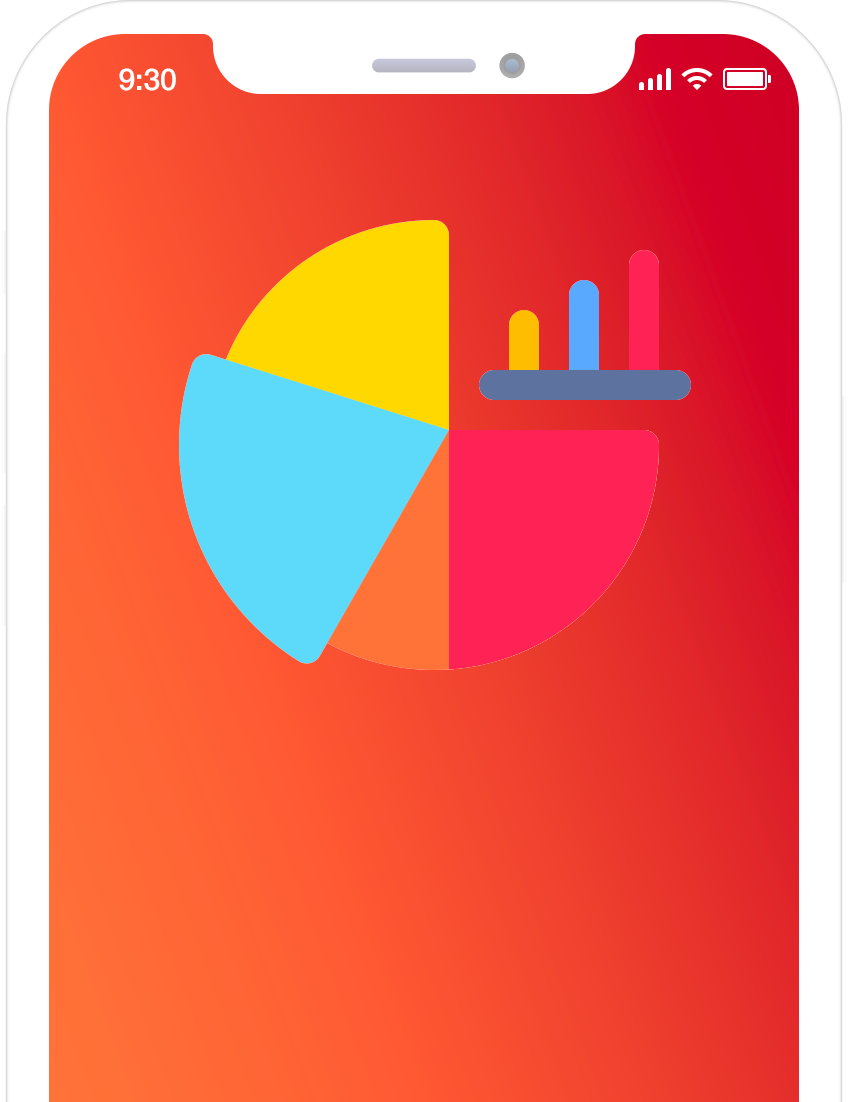
 Nic Dunn |
CEO - Charle Agency
Nic Dunn |
CEO - Charle Agency



